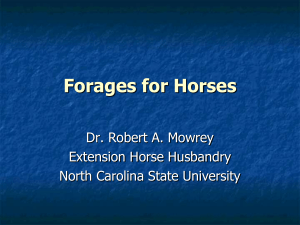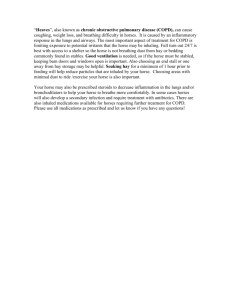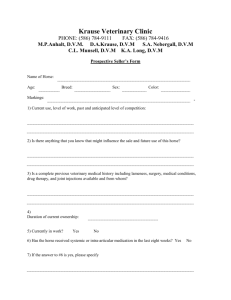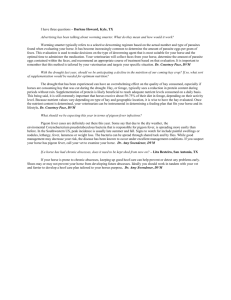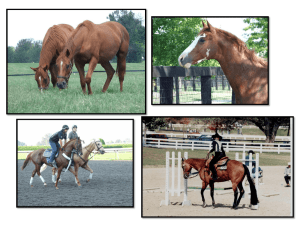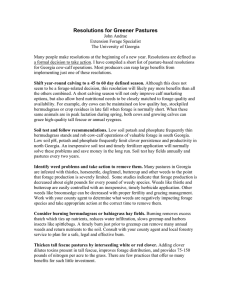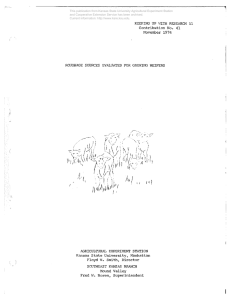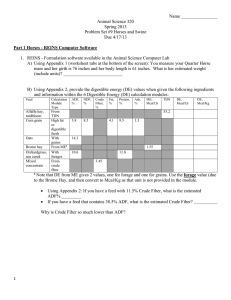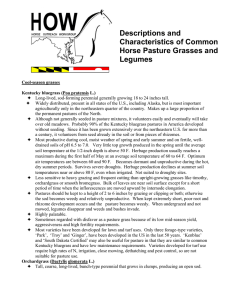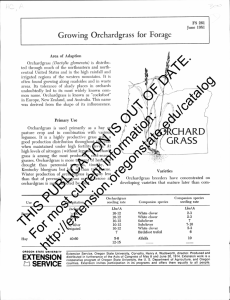Document 13145489
advertisement
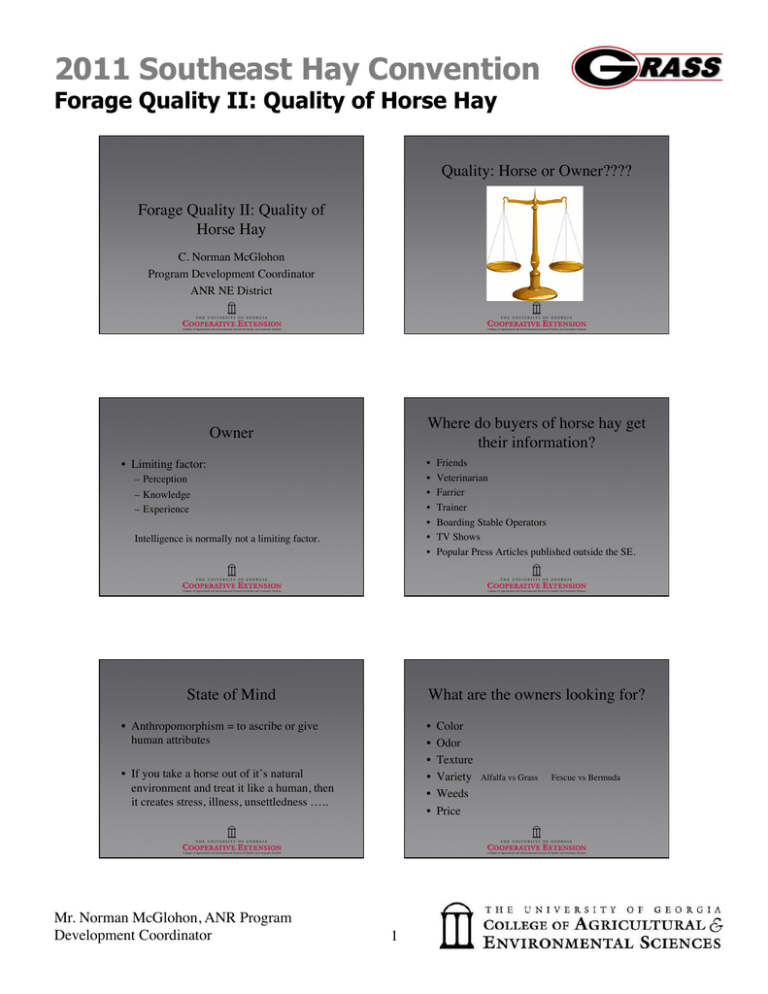
2011 Southeast Hay Convention 3/22/11 Forage Quality II: Quality of Horse Hay Quality: Horse or Owner???? Forage Quality II: Quality of Horse Hay C. Norman McGlohon Program Development Coordinator ANR NE District Where do buyers of horse hay get their information? Owner • • • • • • • • Limiting factor: – Perception – Knowledge – Experience Intelligence is normally not a limiting factor. State of Mind What are the owners looking for? • Anthropomorphism = to ascribe or give human attributes • • • • • • • If you take a horse out of it’s natural environment and treat it like a human, then it creates stress, illness, unsettledness ….. Mr. Norman McGlohon, ANR Program Development Coordinator Friends Veterinarian Farrier Trainer Boarding Stable Operators TV Shows Popular Press Articles published outside the SE. 1 Color Odor Texture Variety Weeds Price Alfalfa vs Grass Fescue vs Bermuda 2011 Southeast Hay Convention 3/22/11 Forage Quality II: Quality of Horse Hay HAY What Mistakes Do They Make? CRUDE NDF % PROT. % CRUDE FIBER % DIGEST. ENERGY MCAL/LB DIGEST ENERGY KCAL/LB Approximate digestible energy values of hays for horses 20 < 30 < 23 1.2 1200 Alfalfa • They smell it, taste it, touch it and don’t know what is in it. Alfalfa 16-18 30-47 24-28 1.1 1100 Alfalfa < 15 47 28 1.0 1000 Bermudagrass 12 < 65 < 30 0.9 900 Bermudagrass 8-12 66-72 31-35 0.8 800 Bermudagrass < 7 72 35 0.7 700 Fescue 12 < 65 < 26 0.95 950 Fescue 7-12 66-70 27-30 0.83 830 Fescue < 7 70 30 0.75 750 Orchardgrass 12 < 60 < 26 0.99 990 Orchardgrass 7-12 60-65 26-30 0.85 850 Orchardgrass < 7 65 30 0.75 750 What is the horse looking for? • Quality: Based on their activity or maturity class • Quantity: Based on their size and age. Is it good enough? Quantity CLASS OF HORSE • http://nrc88.nas.edu/nrh/ • Animal Requirements • Dietary Supply Mr. Norman McGlohon, ANR Program Development Coordinator 2 DAILY FEED INTAKE RELATIVE FORAGE (% OF BODY WEIGHT) QUALITY (RFQ) Maintenance 1.5-2.0% 75 or greater Gestating mare 1.5-2.0% 80 or greater Lactation 2.0-3.0% 90 or greater Growing (weanlings) 2.25- 3.25% 100 or greater Work (performing) 1.75- 3.25% 100 or greater Stallions (non breeding) 1.5-2.0% 75 or greater Stallions breeding 1.75-2.5% 80 or greater 2011 Southeast Hay Convention Forage Quality II: Quality of Horse Hay Other Issues A Producer Can Address One point to remember: • Seasonal Sales • Stage of maturity at harvest – They don’t think about buying it ‘till they need it – They have limited storage. – Delivery – Colic – Behavior – Palatability – Quality – Price • Bale Size Mr. Norman McGlohon, ANR Program Development Coordinator 3 3/22/11
